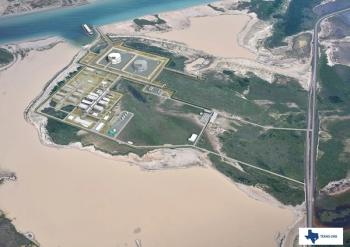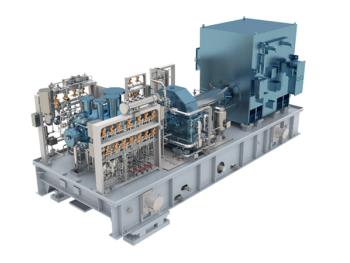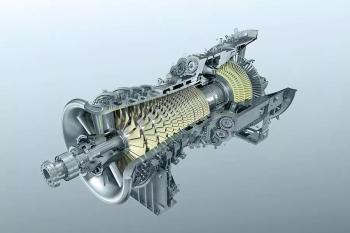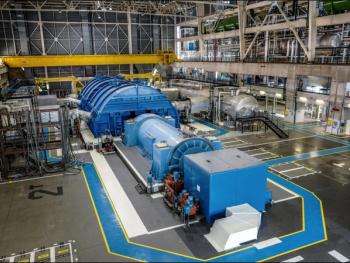
- November/December 2022
- Volume 63
- Issue 5
HYDROGEN TURBINES
HOW FEASIBLE IS IT TO OPERATE GAS TURBINES ON HYDROGEN?
PowerGen 2022 featured a fascinating presentation by John Gülen of Bechtel Infrastructure & Power on the feasibility of hydrogen turbines. John is not what you would call a fan of the concept of powering very large gas turbines with hydrogen. He explained that it would be cost-prohibitive to run them on 100% hydrogen.
Gülen laid out what it would take to make the concept work at a more reasonable level of hydrogen consumption. He suggested that research and development was needed into an efficient turbine in the 200 MW range as the best chance of making hydrogen combustion a success (As shown in the figure, there is a big gap between those mid-size units and large heavy duty gas turbines). The proposed machine is detailed in a paper he gave along with Justin Zachary of Expertech Engineering at the proceedings of ASME Turbo Expo 2022 (GT2022-81807) entitled, “Feasibility of achieving 62% combined cycle efficiency with a 200 MW gas turbine”.
“The smaller the gas turbine, the better the chance of fully green electric power generation,” said Gülen. “We need smaller turbines to be able to burn meaningful amounts of hydrogen efficiently.”
He ruled out aeroderivatives due to their having a high pressure ratio, and too low an amount of waste heat to make them viable in combined cycle operation. He also ruled out large heavy frame machines, which have been receiving the lion’s share of investment by the major gas turbine OEMs over the last couple of decades. This trend appears to be continuing with hydrogen.
Gülen pointed out that they are not the best candidates if hydrogen-based combustion is to achieve efficient operation. The typical 50-Hz J+ Class gas turbine of around 575 MWe, for example, would burn nearly 40 tons per hour (t/h) of H2 based on the use of polymer electrolyte membrane (PEM) technology in an electrolyzer consuming 55 kWh per kg of hydrogen. Such an electrolyzer would require about 2.2 GW of green power. To put this into perspective, consider that the amount of total curtailed wind energy in Germany hovers around 6 to 7,000 GWh, i.e., enough to sustain that one gas turbine for about 3,000 hours at full load.
In the 60-Hz range, the average J+ class turbines of about 420 MWe would burn nearly 30 t/h of hydrogen. This would require the supply of about 1.6 GW of green power. When you consider the amount of wind and solar energy needed to produce the hydrogen feedstock to operate these large machines, raw economics and energy efficiency factors render them infeasible options. Again, to put things into perspective, total wind curtailment in the U.S. in 2020 was 13,000 GWh, which is roughly enough to run only two of those units at full load for 4,000 hours.
According to Gülen, a better approach if hydrogen-based gas turbine combustion is to ever gain traction would be to focus on a smaller model. A 200 MW gas turbine might burn only about 16 t/h of hydrogen or about 900 MW of green power. However, this requires investment. Such a machine would need to incorporate some of the features developed for J-class gas turbines that led to the achievement of combined cycle efficiencies exceeding 62% such as larger air flow and increasing the firing temperature.
His paper lays out the work required in a variety of areas such as the intake, compressor, combustor, turbine, and exhaust in order to create the ideal hydrogen-burning machine.
“Getting to 62% efficiency would make a big difference to the viability of a 200 MW turbine that could deliver meaningful hydrogen-fueled generation,” said Gülen.
Most 200 MW-range turbines are E-class, though a few are F-class. An upgraded F-class would be required for hydrogen generation to bring combined cycle efficiently beyond the 60% mark. A couple of existing models have some of the right characteristics, for example, the 100 MW model from Mitsubishi Power (H100).
Gülen’s ideal configuration for combined cycle hydrogen generation would be two-shaft with the compressor and three-stage high pressure (HP) turbine forming a self-balanced shaft. The low pressure (LP) turbine would have two stages. Using reasonable design assumptions, the combined cycle performance would be about 303.1 MW and 61.34% net LHV.
From a thermal cycle perspective, such a product is conceivable with a high-cycle pressure ratio and a J-class turbine inlet temperature. A two-shaft configuration is needed to achieve a mechanically feasible design. But high investment would beneeded in areas such as compressor and combustor design. OEMs are unlikely to make such an investment unless they can clearly see demand from the market. In Gülen’s opinion, such a product may only be viable in high fuel cost markets.
His conclusion, therefore, is that if hydrogen combustion has any future at all in combined cycle mode to produce consistent large quantities of power, a 200 MW gas turbine concept is a better approach. However, he doubts the likelihood of sufficient investment.
Note that, from an overall CO2 emissions reduction perspective, the end result is pretty much the same no matter how one goes about it. This is a direct function of available excess renewable energy to be devoted to green hydrogen production. However, using the manufactured hydrogen in smaller green generators that would be run to support renewable resources is a better strategy than burning it in one gigantic power plant that would be better suited to running at higher capacity factors.
“The best use of hydrogen in power generation would be to provide peaking or standby power with fully hydrogen-fueled small gas turbines,” said Gülen. ■
Articles in this issue
almost 3 years ago
Avoiding Leakage & Breakagealmost 3 years ago
MYTH: LOGDEC….WHO STOLE MY DAMPING?about 3 years ago
POWER RESILIENCEabout 3 years ago
MITSUBISHI POWERabout 3 years ago
METHANE CAPTUREabout 3 years ago
Show Report: Turbo & Pump Symposia 2022Newsletter
Power your knowledge with the latest in turbine technology, engineering advances, and energy solutions—subscribe to Turbomachinery International today.




